#indian judicial system
Explore tagged Tumblr posts
Text

It’s been probably over a month since this incident but it’s somehow always been on the back of my mind. It scares me so much. So much. She was at her workplace. her workplace.
and I can’t with the “not all men” because of course not all men are creeps but how do I know??? Women as old as 80 and girls as young as 5 aren’t safe at their workplaces, schools, even at home.
I’m really scared for humanity, looking at certain comments in Instagram regarding this incident, made me deactivate my account.
i really do not know what else to write, it’s something I wanted to get off my chest.
from the abhorrent sex crimes in south korea, to femicide in the united kingdom, to women and girls in afghanistan losing the right to be seen and heard in public. misogyny is the most prevalent form of oppression around the world, yet, is the one that is the least taken seriously by governments and society as a whole.
5K notes
·
View notes
Text
সুখী গৃহকোণ আর সমাজ ?
মানিয়ে নেওয়ার ক্ষমতা আমাদের ভালোই, তার জানান সমাজ বার বার দিচ্ছে, মানুষ অনেক বছর ধরে পরিশ্রম করে যোগ্যতা অর্জন করে, পরিশ্রম করে, করে রোজগার, সঞ্চিত অর্থগুলো শুধু অর্থ নয়, প্রত্যেকের জীবনের অনেকগুলো বছরের আত্মত্যাগের খতিয়ান
চলো এবার উল্টো দিক দেখি,পারিবারিক প্রেক্ষাপট আদৌ বিভাজিত নাকি?রোগ কি খুব ছড়িয়েছে নাকি উলটপুরাণ রয়েছে অস্তিত্বে,বোধগম্যতা হ্রাস পেয়েছে নাকি নাক উঁচুর প্রতি আস্থা, পূর্ণতা দিচ্ছে, উল্টো গল্প পড়ছে চাপা, অবলা কত আত্মত্যাগের গল্প,মানিয়ে গুছিয়ে ��লছে বেশ ভালোই, তোয়াক্কা নেই সমাজে কে কি বললো,সমাজমাধ্যমে ওদেরও ভালো ছবি, অন্ধকার সুরক্ষিত,প্রকাশ্যে ওদের সাহস দেখাতে হয় না, মনে সব পরীক্ষিত, নিরাপত্তাহীনতা…
#abhaya#atul bangalore case#contrast#delhi nirbhaya case#indian judicial system#justice#justice is due#justice is pending#kolkata#kolkata abhaya case#kolkata nirbhaya case#lifestyle#need change#need justice#need speed#nirbhaya#raktim chakraborty on justice is due#raktim chakraborty poetry#raktimchakraborty#society#Sociology#thinking#thought of the day
0 notes
Text
Jamshedpur: Nagadih Mob Lynching Case Hearing Delayed
Four accused absent, court sets new date for statements Jamshedpur court postpones proceedings in 2017 lynching case, warns of arrest warrants for future absentees. JAMSHEDPUR – The Jamshedpur court’s hearing of the notorious Nagadih mob lynching case faced a setback on Tuesday. Four accused individuals failed to appear before ADJ-1 Vimlesh Kumar Sahay’s court, hindering the recording of…

View On WordPress
#ADJ-1 Vimlesh Kumar Sahay#अपराध#Bagbera police station case#child theft rumors India#Crime#Indian judicial system#Jamshedpur court hearing#Jamshedpur crime news#Jharkhand law and order#mob violence Jharkhand#Nagadih mob lynching case#public safety concerns India
0 notes
Text
Court - Marathi Movie Review
Discover the raw realism and profound social commentary of Chaitanya Tamhane's "Court" in this insightful film review.
Chaitanya Tamhane’s “Court” is not just a film; it’s a profound exploration into the convoluted corridors of the Indian judicial system. Through a Kafkaesque lens, Tamhane meticulously crafts a narrative that not only dissects the intricacies of legal proceedings, where truth and justice often seem like distant relatives at a dysfunctional family reunion. But the film also serves as a searing…

View On WordPress
#art and justice#chaitanya tamhane#colonial legacy#court movie#courtroom drama#film analysis#folk music#indian judicial system#legal proceedings#marathi movie#marginalized communities#power structures#realism#social commentary#systemic biases#thought-provoking
1 note
·
View note
Text
The Rest of the Story: Indigenous Resistance
U.S. Supreme Court building, credit: wikimedia commons In this episode, we revisit two stories concerning indigenous rights we’ve covered in the past. In the first half, Rebecca Nagle joins us to discuss the Supreme Court decision to uphold the Indian Child Welfare Act and why the legitimacy of the law is so important to tribal sovereignty. We also talk about the right’s legal strategy in the…

View On WordPress
#adoption#Amah Mutsun#courts#environment#ICWA#INDIAN CHILD WELFARE ACT#Indigenous#indigeous sovereignty#judicial#Juristac#justice#mining#native#protest#Rebecca Nagle#sacred site#Santa Cruz#Supreme Court#tribal#Welfare system
4 notes
·
View notes
Text
Explore the journey of Justice Sanjiv Khanna, the 51st Chief Justice of India, and his vision for the Indian judiciary in shaping a just and equitable society.
#Justice Sanjiv Khanna#Chief Justice of India#Indian judiciary#Supreme Court#legal system#justice reforms#judicial leadership TheJuniorAge KidsNewspaper ChildrenNewspaper Newspaper For Kids Newspaperforchildren Kids Newspaper India ChildrenNews
0 notes
Text
India's Legal Labyrinth: A Satirical Guide to Understanding BNS2, BNSS2, and BSB2
**Once Upon a Time in a Legal Wonderland:**In the grand democratic theatre of India, where laws are often more dramatic than Bollywood blockbusters, we’re witnessing the introduction of three legal musketeers: Bharatiya Nyaya (Second) Sanhita (BNS2), Bharatiya Nagrik Suraksha (Second) Sanhita (BNSS2), and Bharatiya Sakshya (Second) Bill (BSB2). They’re set to replace old legal classics – the IPC,…
View On WordPress
#2023#BNS2#BNSS2#BSB2#civil liberties#civil rights#Code of Criminal Procedure#constitutional law#democratic debate#freedom of speech#India legal reforms#Indian Evidence Act#Indian Parliament#Indian Penal Code#judicial system#Khalistan-movement#legal controversies#legal satire#legal updates 2023#Legal-Analysis#legislative process#National-Security#political humor#sedition law#treason in India#witty commentary
0 notes
Text
Article 121 of the Indian Constitution: Restrictions on Discussion in Parliament
The Indian Constitution is a comprehensive document that lays down the fundamental principles and framework for governance in the country. Among its many provisions, Article 121 addresses the restrictions on the discussion of certain matters in the Parliament. This article focuses on a specific aspect of Article 121, which pertains to the discussion regarding the conduct of judges in the…
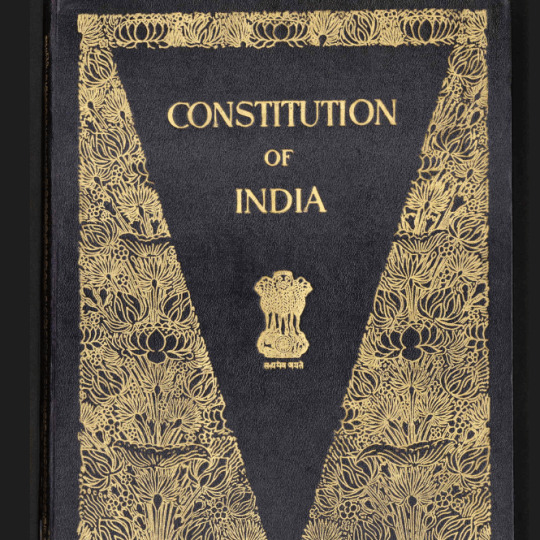
View On WordPress
#accountability#Article 121#constitutional balance#constitutional provisions#Criticisms#Debates#discussion restrictions#High Court#impartiality#Indian Constitution#judicial conduct#judicial independence#judiciary#justice system#legal policy#Parliament#parliamentary scrutiny#political interference#public trust#removal of judges#rule of law#safeguarding#supreme court#transparency
0 notes
Text
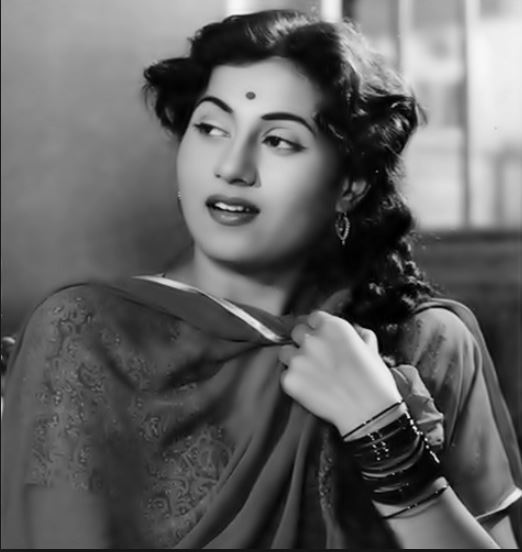

Propaganda
Madhubala (Mughal-e-Azam, Barsaat Ki Raat, Mr. & Mrs. '55)—The Venus of India; heart-throb of all who saw her; responsible for the sexual awakening of every single desi lesbian I know (including me!) And my god, she is breathtakingly beautiful. Look at the subtle grace with which she moves, and that smile - the kind of radiant smile that can make you laugh with sheer delight, or cry because of its hidden pain. Those wild curls! That Cupid's bow! The way she tilts back her head and smiles at you with mischief dancing in her eyes! She has a way of looking at the camera that makes you feel she's sharing a private joke just with you; it's something about that quizzical twist of the lips and eyebrows. As an actress, she is inimitable; she seems to effortlessly inhabit roles ranging from a heart-broken courtesan to a laughter-loving socialite. Fun fact : she's had quite the fan following in Greece! Stelios Kazantidis even wrote a song as a tribute to her.
Olivia de Havilland (Adventures of Robin Hood, Gone With the Wind, The Heiress)— The woman who took on the Studio System at the height of their power and Won! A double Oscar winner! Is magnetic and beautiful in everything she's in and gave us all the juicy scandal with her sibling rivalry with Joan Fontaine! Before the Oscar Slap was the Oscar sister snub! Also everything she wears in Robin Hood she makes beautiful even a purple green and orange monstrosity how does she do it! Anyway this scene is one of my old Hollywood favourites
This is round 3 of the tournament. All other polls in this bracket can be found here. Please reblog with further support of your beloved hot sexy vintage woman.
[additional propaganda submitted under the cut.]
Madhubala:

An icon of Bollywood, who was well known for her beauty and has continued to inspire performances and songs into the 21st century. She was at times described as "the number one beauty of the Indian screen" and "the biggest star in the world".
SHE IS EVERYTHING AHHH. JUST LOOK AT HER SMILE-
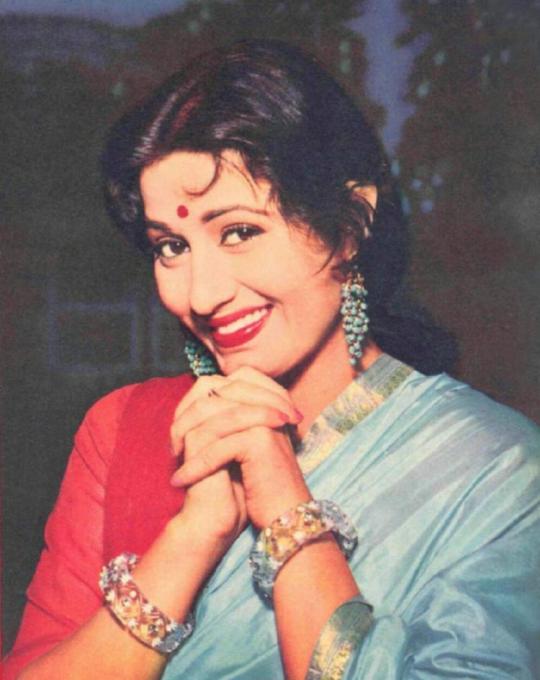
She's been nicknamed the Marilyn Monroe of India and was one of the highest paid actresses in the Hindi film industry (the term Bollywood did not exist yet) during the 1950s. Also an extremely talented dancer and singer
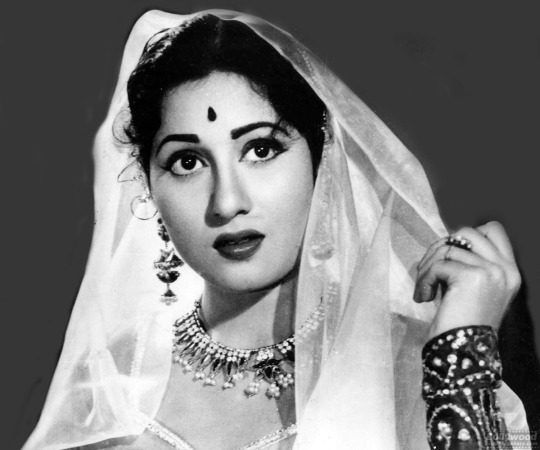
SHE'S JUST SO STUNNING, like seeing her eyes IMMEDIATELY CAPTIVATES YOU, THE DANCING, THE BEAUTY!!!!!!!!! She worked in Bollywood for over 20 years and passed away at a sad early age of 36, BUT THE IMPACT SHE HAD WAS UNMATCHED!!!!!
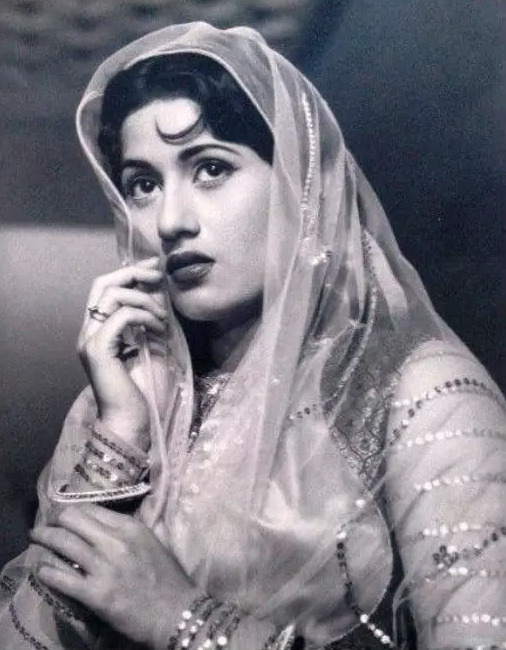
That sassy sideways glance she does always has me WEAK AT THE KNEES. And when she's making silly faces at the camera to mimic someone ahhhh my gay little heart <3

Olivia de Havilland:

She is just perfection. She has a smile that is looks like it is barely holding back, and yet so reserved as well.

Broke the contract system and won freedoms for actors (the de Havilland Law is still in effect I believe). 2 time Oscar winner. Beautiful and smart
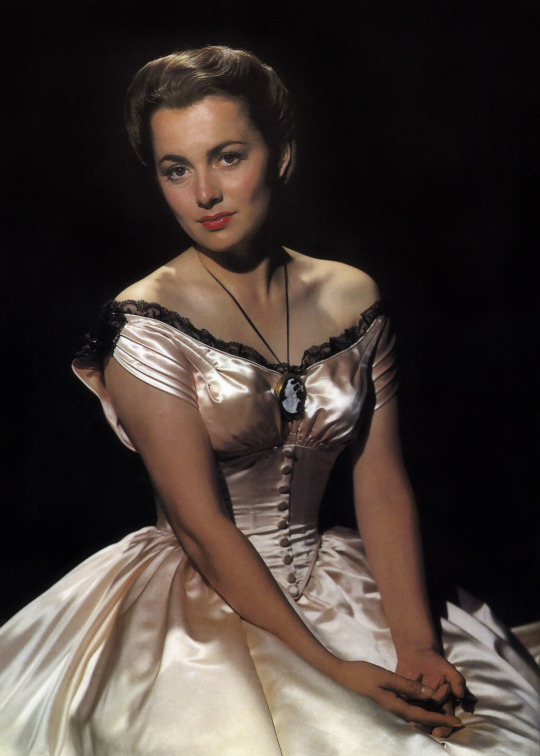
She legally challenged the movie studios' unfair contracts and won, setting a precedent for other actors to be treated more fairly. This was at great cost to her financially and essentially getting her blacklisted for years but the resulting judicial opinion is still known as the De Havilland Law and has won her a great deal of praise and admiration.
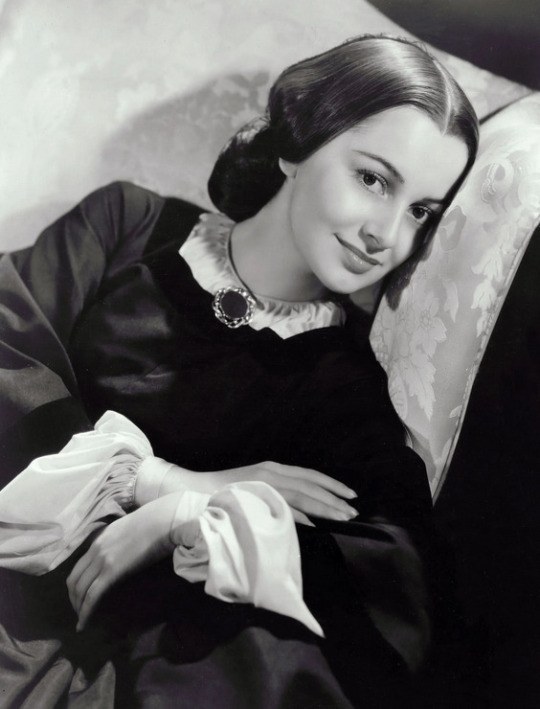
Her performance in The Heiress is one of my all-time favorites, she’s so good at making melodrama feel real and grounded without sacrificing any of the passion/drama.
Serenely beautiful, she struck a balance between crowd-pleasing fluff and prestigious drama. Famously at odds with her equally successful sister Joan Fontaine, she was too much of a lady to ever say anything public. Successfully sued Ryan Murphy for portraying her as a saucy gossip in Feud.

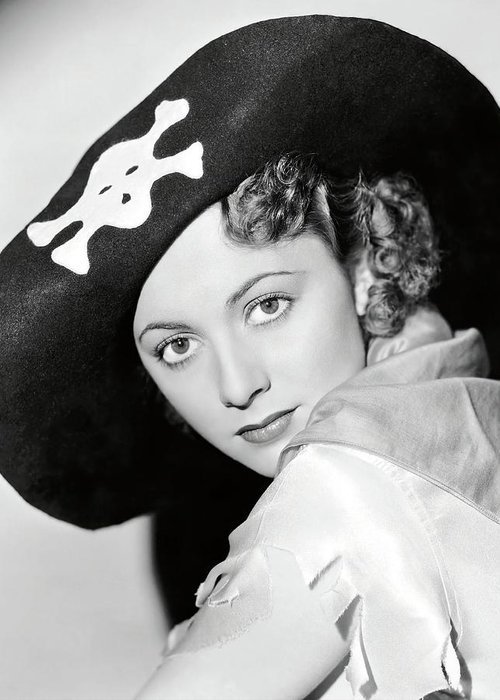
the period costume + eye patch combo in That Lady is just an absolute serve

She has the most adorable and cherubic face and voice

224 notes
·
View notes
Text
3 female MRA's from India
I first saw their names on the men's right reddit page and searched up some info about them
Deepika Narayan Bhardwaj:
Deepika Narayan Bhardwaj is an Indian Journalist, Documentary Filmmaker & a Men's Rights Activist from Gurgaon, Haryana. In times when everyone's emphatically talking about women's rights, Deepika makes a strong case for protection of rights of men too whether it's false accusations or domestic violence or sexual crimes perpetrated upon them. Her documentary films focus on gender politics as it intersects with laws, justice, culture, society, and institutions and explores often ignored side of gender issues from a new perspective. Her films are particularly known for ground research, facts & statistics elaborated in depth. In 2010, she was selected as one of the ten journalists from around the world to attend "Future Media Leaders Course" By Thomson Foundation UK. She's a woman trying to create a world where there is no gender war and all genders empathize with each other's struggles & sufferings.
Arnaz Hathiram:
She is the founder of the website called Voice for Men India
Voice for Men is an earnest effort to appreciate men as one of the genders that are equally important to society. Your online mag will ensure its best to curate relevant articles, information, interviews as well as judicial verdicts that could be significant in the journey of 'His Story.' The platform also brings together the energies of several on-ground Men's Rights Activists in India who have been struggling for gender equilibrium in civilisation as a whole. About the founder: Arnaz Hathiram has been an active member of the Men's Rights Movement and has also represented the delegation that organised a seminar demanding a commission for men in India in September in 2018. She holds a Master's degree in Journalism and Mass Communications with a specialization in social media. With near two-decade long professional industry experience, our founder is an effective advocate of the cause and drives messages to the masses using creative communication. Having worked with several online media portals, she had rich experience in curating and cultivating relevant content from the web, designing newsletters and running campaigns
There's also info on how to reach her on social media as well as an email if you need to reach her for legal matters or content.
On the website, there's different categories from alimony to murder to in the law to suicide to success stories and more.
And finally, we have Monica Garkhel who is a lawyer
Together let’s build a system where all genders can co-exist peacefully!! Hi, I am Monica Garkhel, a gender equality crusader. In India, many laws exist for the protection of women, but no one cares about the pressure that a man handles and that is the reason why no laws are made in favour of men. Many women nowadays take support of modern legal India and file false cases against their male partners. Family laws exist in our country but women believe that those laws are only made for them. Men always have a fear of defamation in society and due to this fear, they are unable to put forward their part of the story. Women in India have got a tool, that is called feminism and they can play a feminist card very easily nowadays. Most of the women who torture a man mentally are the advocates of feminism only. With laws being made to protect women, our judiciary system has become biased. We all talk and hear a lot about women’s rights. Whereas in all this chaos men’s rights often go unnoticed and unheard. With laws like IPC 498A, PWDVA 2005 Domestic Violence, 125CrPC Maintenance, IPC 375 Gang Rape, IPC 376 False Rape, and many others because of which innocent men and their families are being suffered.
If a woman lodges a complaint against her man, then the police will quickly issue an arrest warrant against the man and in some cases, they don’t even ask for evidence. If the same case is put-up in front of the police by a man, then they will not even take the case seriously in India. First of all, only a few men put up such cases in front of the police because most men don’t even show that they are being harassed due to the social stigma, i.e., “Men are meant to be stronger”. Here, we will provide you the knowledge about the rights of a man, from which Indian men are unaware until today. Our website will tell you about how women pressurize men by taking legal action against them and by trapping them in false cases. I am here to bring awareness about men’s rights, Counsel either gender, raise my voice against this unjust and inhuman system, and offer my Legal advice and support if you are fighting a legal battle.
14 notes
·
View notes
Text
A man has been found guilty of the rape and murder of an Irish woman backpacking in India.
Danielle McLaughlin, 28, from County Donegal, was found dead in a field in the western state of Goa in March 2017.
A post-mortem examination found brain damage and strangulation as the cause of death.
Vikat Bhagat was found guilty at the District and Sessions Court in south Goa, India, on Friday and could face life imprisonment, but prosecutors have asked for the death penalty.
His defence team appealed for leniency.
He will be sentenced next Monday.
'Cruelly ending her beautiful life'
In a statement afterwards, Danielle's mother Andrea Brannigan and her sister Joleen McLaughlin Brannigan, said justice "has finally been achieved".
"There was no other suspect or gang involved in Danielle's death and Bhagat was solely responsible for cruelly ending her beautiful life," they said.
The family said they have "endured what has been effectively" an eight-year murder trial with many delays and problems.
The "quest for truth" has been "very tiring" and family said they "are glad it is over".
"We are content now with the judicial confirmation in public of what we already sadly knew," they added.
The family said "in memory of Danielle", they had stayed "patient and respectful of the Indian legal system".
"We are glad to have visited the area where Danielle spent her last days on this earth, painful and difficult as that was," the statement continued.
"We now hope that not only that Danielle can rest in peace but that we, as a family, can have some peace and comfort knowing that the person who brutally raped and murdered our precious Danielle has been convicted."
A statement was also posted on behalf of the family on the Trust for Danielle McLaughlin Facebook page, saying they never got to see the woman Danielle would have become.
"Because of Vikat she will forever be 28," the statement said.
"We will never see her smile or hear her laugh and we appreciate all that they have done for our campaign fighting for this outcome.
"She was so much more than a daughter, sister and best friend. She lit up every room she entered and touch the lives of all who met her."
Rape victims cannot usually be named under Indian law. Their identities are often hidden in a bid to protect them from being shunned in society.
In this case, Danielle McLaughlin's family have spoken to the media to raise awareness of her case.
Ms McLaughlin, who grew up in Buncrana, had travelled to India in February 2017.
She was there for two weeks before she was murdered..
The Liverpool John Moores University student had been staying in a beach hut with an Australian friend.
The pair had been celebrating Holi, a Hindu festival, in a nearby village.
She left the village at night and her body was found the next day by a local farmer in an isolated spot.
On Friday morning, Tánaiste (Irish Deputy Prime Minister) Simon Harris paid tribute to Ms McLaughlin's family, in particular her mother "for her determination and resilience in the face of unimaginable tragedy".
"While nothing can ease the pain of their loss, I hope that this verdict represents some closure for the family," he said.
"May Danielle rest in peace."
Ms McLaughlin, who had dual Irish and British citizenship, travelled to India using a British passport.
In 2018, the then Taoiseach (Irish Prime Minister) Leo Varadkar met and apologised to her family after a misunderstanding about her citizenship.
Her body was brought home to Donegal with the help of the Kevin Bell Repatriation Trust.
She is buried in her hometown of Buncrana in the Republic of Ireland.
10 notes
·
View notes
Text
Honouring Truth and Reconciliation Day: Remembering the Importance of Orange Shirt Day
Shaina Tranquilino
September 30, 2023

In recent years, there has been a growing recognition of the importance of truth and reconciliation in acknowledging and healing the wounds caused by historical injustices. Canada's Truth and Reconciliation Day, recognized on September 30th annually, serves as a crucial reminder that understanding our past is essential for building a more inclusive and harmonious future. In conjunction with this day, Orange Shirt Day stands as a poignant symbol of remembrance and reflection concerning the devastating impacts of residential schools. This blog post aims to shed light on both events' significance and highlight why they deserve our attention.
1. Understanding Truth and Reconciliation:
Truth and Reconciliation Day holds immense value as it acknowledges the painful history experienced by Indigenous peoples in Canada due to colonization policies such as the Indian Residential Schools system. The objective is not only to remember but also to foster an environment where dialogue, empathy, and understanding can flourish between Indigenous communities and non-Indigenous Canadians.
2. Recognizing Orange Shirt Day:
Orange Shirt Day complements Truth and Reconciliation Day by focusing specifically on raising awareness about residential schools' traumatic legacy. Initiated by Phyllis Webstad's story when her new orange shirt was taken from her upon arrival at a residential school, this day reminds us of the countless children who were stripped of their culture, language, identity, dignity, and familial bonds.
3. Learning Lessons From Our Past:
By commemorating these days collectively, we acknowledge that recognizing historical wrongs paves the way for healing intergenerational trauma. It prompts us to reflect on how similar systemic injustices persist today within various societal structures—education systems, healthcare disparities, judicial processes—among others.
4. Promoting Education & Awareness:
Educating ourselves about Indigenous history should extend beyond one designated day or month; however, Truth and Reconciliation Day provides an opportunity for all Canadians to engage in learning about the diverse cultures, traditions, and contributions of Indigenous peoples. It encourages us to become active participants in reconciliation efforts by challenging stereotypes and fostering inclusive spaces.
5. Fostering Reconciliation:
Reconciliation is a journey that involves listening, understanding, respect, and dismantling systemic barriers. On this day, let's strive for meaningful reconciliation by recognizing the rights of Indigenous peoples and promoting their self-determination while building bridges between communities based on mutual trust and understanding.
Truth and Reconciliation Day signifies an essential step towards healing historical wounds, acknowledging past injustices, and promoting unity among Indigenous and non-Indigenous communities. Together with Orange Shirt Day, it reminds us that we must confront uncomfortable truths if we genuinely seek reconciliation in our society. Let us embrace these days as opportunities to learn from our history, amplify Indigenous voices, work towards positive change, and build a future where cultural diversity thrives within an atmosphere of truth, compassion, justice, and respect for all.
#truth and reconciliation day#orange shirt day#every child matters#end colonialism#healing generations#honouring survivors#indigenous rights#residential school legacy#remembering the children#reconciliation journey#justice for all
63 notes
·
View notes
Text
Constitution for a Hindu Nation to be unveiled on February 3, 2025, at the Maha Kumbh festival
For context, the Maha Kumbh is an important Hindu pilgrimage that is currently taking place in Prayagraj (formerly known as Allahabad) in the Indian state of Uttar Pradesh. The "Constitution" for the "Akhand Hindu Rashtra" ("Unified Hindu Nation") will be unveiled at this festival on February 3rd.
Some important features of this constitution:
It aims to establish a "Hindu Rashtra" (Hindu Nation) by 2035.
It provides for the implementation of the Hindu judicial system
Education in the country will follow the ancient Vedic systems. All English-language schools will be converted to gurukuls (Vedic schools). Islamic madrasas will be abolished.
It will support monogamy and the joint family system.
It will (supposedly) abolish the caste system.
Only Hindus will be allowed to contest elections and only those who belong to faiths founded in India (Buddhism, Hinduism, Jainism and Sikhism) will be allowed to vote.
The Parliament candidates will have to be gurukul students.
To qualify for the position of President of the Hindu Rashtra, candidates will need to have expertise in Dharmashastra and Rajashastra (ancient Hindu texts).
The idea of a "Hindu Rashtra" is not new. While the idea can be traced back to Chanakya, a 3rd-century philosopher, the idea was popularised in recent times by VD Savarkar through his 1923 pamphlet "Hindutva: Who is a Hindu?". In this work, he envisioned a "Hindu Rashtra" that would encompass the entire Indian subcontinent, which he referred to as "Akhand Bharat". Savarkar's ideology emphasized an ethno-religious view of nationalism that prioritized Hindu identity. He believed that Hindus were the rightful inhabitants of India and advocated for their dominance over other communities. Today this idea is being propagated by the BJP (the ruling party at the centre) and affiliated organisations such as the RSS and they have managed to win a significant portion of the Hindu population to it.
The idea of a "Hindu Rashtra" spells disaster for many groups in the country. It overlooks the struggle of oppressed castes who converted to Islam and Christianity to escape the Hindu caste system. India is already discriminatory towards Christians and Muslims, who regularly face discrimination, false accusations of forced conversions, systemic violence, and lynchings. The vision of a Hindu nation also tends to reinforce patriarchal norms and traditional gender roles. Hindutva, the ideology behind the idea of a Hindu nation, glorifies women primarily as mothers and wives, reinforcing the notion that their primary role is to nurture and support the family. It also promotes the restriction of women's participation in public life and their pursuit of a career outside the household. The rise of this conservative ideology has also adversely impacted LGBT rights in India.
This unveiling at the Maha Kumbh raises urgent questions about the future of India. This constitution will also be sent to the Centre once it has been approved by a group of Hindu scholars.
Further reading:
Maha Kumbh: Only Sanatan Dharma followers will have right to contest elections under 'Hindu Rashtra Constitution'
First Constitution of Akhand Hindu Rashtra to be unveiled at Maha Kumbh
Overlooked Danger: The Security and Rights Implications of Hindu
Nationalism in India
Emerging Hindu Rashtra and Its Impact on Indian Muslims
Fascism, Fundamentalism, and Patriarchy
Women Under Hindutva: Misogynist Memes, Mock-Auction and Doxing, Deepfake-Pornification and Rape Threats in Digital Space
3 notes
·
View notes
Text
BR Sarangi New Chief Justice of Jharkhand High Court
Justice B.R. Sarangi Appointed as Head of State Judiciary The appointment of Justice B.R. Sarangi as Jharkhand High Court’s Chief Justice marks the end of a six-month vacancy in this crucial position. RANCHI – Justice B.R. Sarangi (Vidyut Ranjan Sarangi) has been appointed as the new Chief Justice of the Jharkhand High Court, filling a position that had been vacant since December 28,…
#राज्य#Chief Justice appointment#Indian judiciary#Indian legal system#Jharkhand High Court#Jharkhand legal news#judicial appointments#Justice B.R. Sarangi#legal system in Jharkhand#Orissa High Court#state#Supreme Court Collegium
0 notes
Text
Balancing Rights and Welfare.
In India, the Rights and Welfare to own property and the government’s power to take it for public good have often conflicted. This ongoing debate was highlighted in a recent case, Property Owners Association v. State of Maharashtra, decided by the Supreme Court of India. The case focused on an important question: Should private property always be considered something that can serve the entire community? This question is not new; India’s leaders have faced it since the 1970s when socialist ideas inspired changes to the Constitution. Today, the Supreme Court’s decision seeks to balance property rights with public welfare, considering both personal freedoms and the country’s changing needs.
The 25th and 26th Constitutional Amendments for Rights and Welfare
In 1971, the Indian government introduced two important amendments—the 25th and 26th—to support socialist ideals. These amendments aimed to give the government greater control over property to promote fairer distribution of resources. Under the 25th Amendment, the term “compensation” in Article 31 was replaced with “amount,” meaning that the government could pay less than market value when acquiring private land. It also added Article 31C, giving priority to Articles 39(b) and (c) of the Directive Principles of State Policy (DPSP), which support the distribution of resources for the common good and prevent wealth from gathering in only a few hands.
The 26th Amendment went further, abolishing special payments to former princes, known as “privy purses.” This helped establish an equal society where everyone could benefit, not just a privileged few. Together, these amendments encouraged a system where the government could control resources to help everyone, especially the less fortunate.

Strengthening Public Welfare Through Articles 39(b) and 39(c)
The changes to the Constitution allowed the government to enforce Articles 39(b) and (c) more strongly. Article 39(b) calls for resource distribution to benefit everyone, while Article 39(c) works to prevent wealth concentration. With the 25th Amendment, the government could acquire land more easily to build schools, hospitals, and other public resources. This amendment prioritised public welfare over individual property rights, which meant the government could take land if it would help a larger number of people.
The Supreme Court Case: Property Owners Association v. State of Maharashtra
Recently, the Supreme Court revisited the question of property rights in the case Property Owners Association v. State of Maharashtra. The case arose from a law passed by the Maharashtra state government in 1986, which allowed the government to take over poorly maintained buildings from landlords and give them to tenants. This was meant to protect tenants from unsafe living conditions. However, landlords argued that this law violated their property rights.
Chief Justice D.Y. Chandrachud, representing the majority of the judges, decided that not all private property could automatically be taken by the government for community purposes. Instead, the Court ruled that only certain types of property could be considered “material resources of the community,” depending on factors like scarcity, necessity, and the benefit to the community. This new approach means that the government can only acquire private property when it clearly serves the community’s interests.
Balancing Rights with Judicial Review on Rights and Welfare.
The Court’s ruling placed limits on the government’s power to acquire private property by strengthening the role of judicial review. Judicial review allows courts to examine government actions and decide whether they are fair and just. Previously, the government could simply claim that a law followed Article 39(b) and avoid judicial review. Now, however, the Court requires a case-by-case examination to ensure the law truly benefits the public and respects property owners’ rights.
Justice Sudhanshu Dhulia, in his dissenting opinion, argued that Parliament should have the final say on what counts as community resources, since elected representatives are responsible for making decisions on public welfare. Meanwhile, Justice B.V. Nagarathna added that personal items, like someone’s clothes or furniture, should never be considered community resources, emphasising the importance of respecting individual privacy.
Socialist Roots and the Shift to a Balanced Approach
The new ruling is a shift from India’s earlier socialist view, inspired by judges like Justice V.R. Krishna Iyer and Justice O. Chinnappa Reddy, who believed that all property could be controlled by the government to benefit society. This older view supported nationalisation and wealth redistribution, but India’s economic direction has since changed. The Court’s ruling acknowledges this shift and supports a welfare model that balances private ownership with public needs rather than focusing solely on socialist ideals.
The judgment also brings in the concept of “intergenerational equity.” This means that today’s property owners have a responsibility to future generations, ensuring that resources are used wisely and are available for the next generation. This idea encourages sustainable development and responsible ownership, aligning with a vision of long-term community welfare.
The Influence of Past Interpretations
The recent judgment also revisits and adapts earlier interpretations of property rights. In the past, Justice Krishna Iyer argued that all essential resources should serve the community and that the government should be able to control them. However, today’s Court chose a more balanced approach, recognising that while public welfare is essential, private property rights are also valuable in a modern, market-driven economy. This change reflects India’s growth from a strictly state-controlled economy to a mixed one that respects both private and public interests.
The Case’s Broader Socio-Economic Impact
This ruling comes at a time when India balances socialism with capitalist growth. After independence, the government often took over private industries to build a state-led economy. Over time, however, private investment has become essential to the nation’s economic growth. This Supreme Court ruling supports this new approach, respecting both community needs and private investment.
For property owners, the ruling offers protection, assuring them that their land cannot be taken without reason. It encourages a stable environment for people and businesses to invest without fearing that the government will take away their property unfairly. For the government, it means any property acquisition must be justified as genuinely benefiting the public.
The Continuing Story of Property Rights
This case reminds us of Saeed Akhtar Mirza’s film Mohan Joshi Hazir Ho, where the character Mohan Joshi fights for his right to live in a safe home despite his landlord’s neglect. Like in the film, this legal battle has gone on for decades, with both landlords and tenants waiting years for a decision. Although the nine-judge bench’s decision offers clarity, it leaves some questions open, as another bench will decide if the 1986 law is constitutional.
The judgment illustrates how the law can help people while also respecting personal property rights. It shows that both sides—property owners and the government—can be protected through fair laws.
Future Implications of the Judgment
The Supreme Court’s judgment has several long-term implications for both property owners and the government. First, it reinforces the right to private property, establishing that private ownership is not only constitutionally protected but also respected within the legal framework. For property owners, this judgment is a form of protection, as the government must now follow clear guidelines and provide fair compensation if it wishes to acquire private property.
For India’s investment climate, this judgment is also significant. By protecting property rights, the Court has created a stable environment for investors. This move encourages individuals and companies to invest in private property without the fear of sudden, unjust acquisition by the state. As a result, this judgment can have a positive impact on India’s economy, supporting both domestic and foreign investments.
Conclusion
India’s journey with property rights reflects a continuous search for balance. The 25th and 26th Amendments gave the government greater control for public welfare, but today’s Supreme Court decision adds important safeguards for individuals. By allowing the government to take property only when it serves the community and compensating owners fairly, The Property Owners Association v. State of Maharashtra judgment protects both individual rights and public welfare. It represents a new direction in Indian constitutional law, rejecting a one-size-fits-all approach to eminent domain, and emphasising the importance of fairness and justice in government policies. This judgment is a milestone that reflects India’s evolving socio-economic landscape. It sets a guiding example for future cases, helping India grow as a country where personal responsibility and community needs are respected. As India develops, this balanced approach supports a vision of fairness and inclusion, ensuring that both private rights and public welfare are equally valued in the nation’s future.
2 notes
·
View notes
Text
Native Cinema Showcase All films on demand November 17–24, 2023
The National Museum of the American Indian’s Native Cinema Showcase is an annual celebration of the best in Native film. For this year’s theme, we highlight films of Indigenous perseverance that inspire, uplift, and triumph against adversity—stories that prevail against the judicial system, generational trauma, and cultural appropriation through love and complex relationships, self-worth, and humor.
12 notes
·
View notes